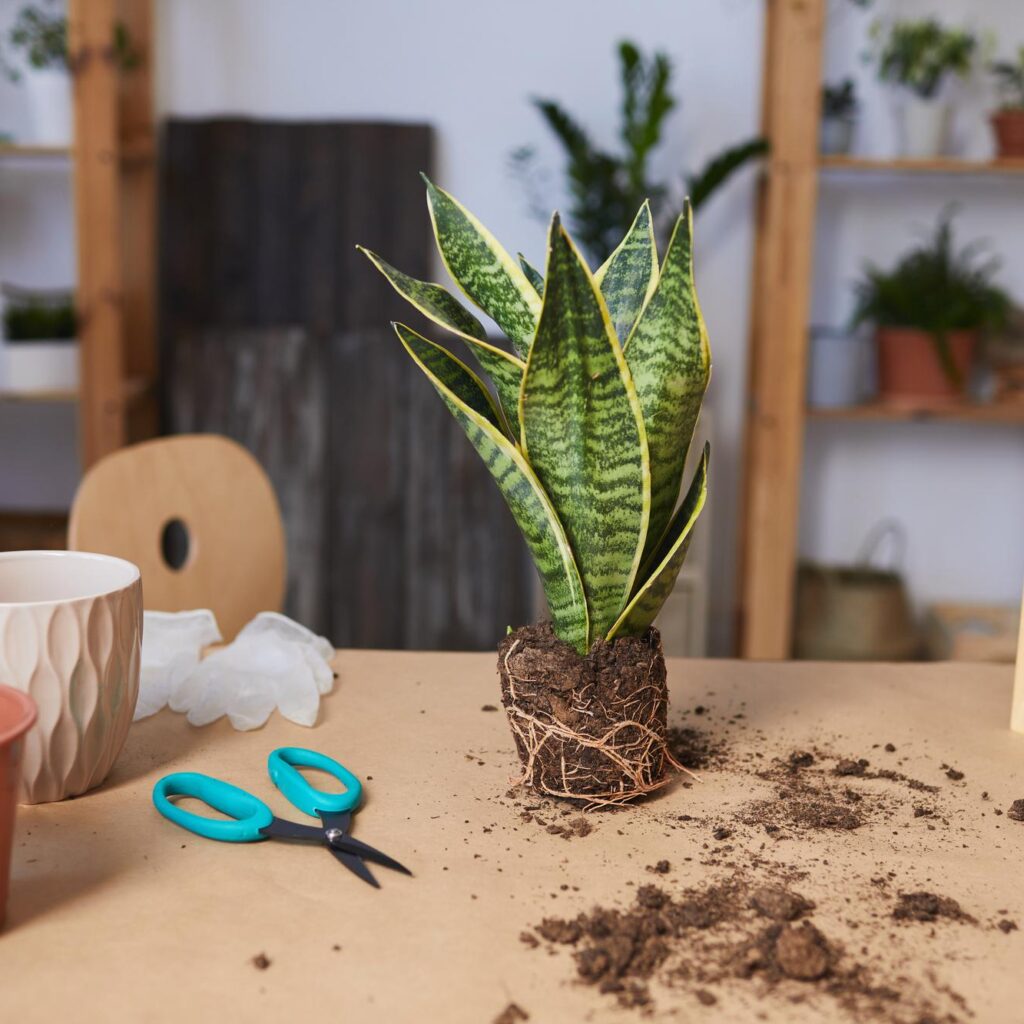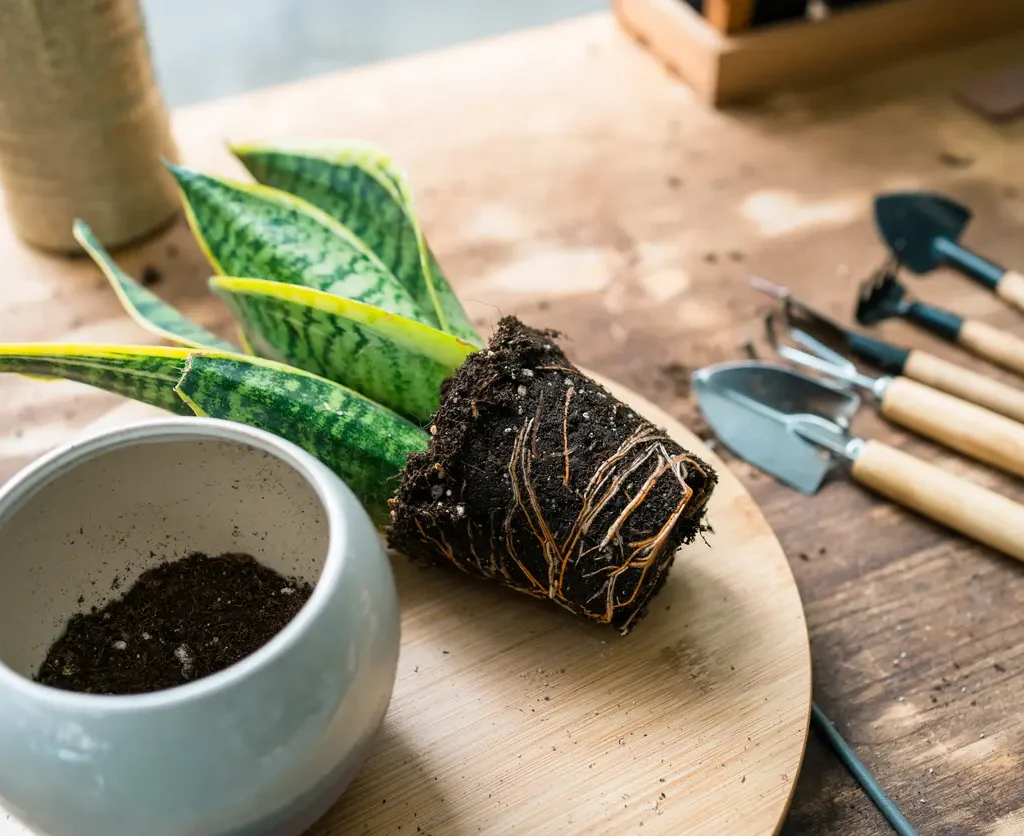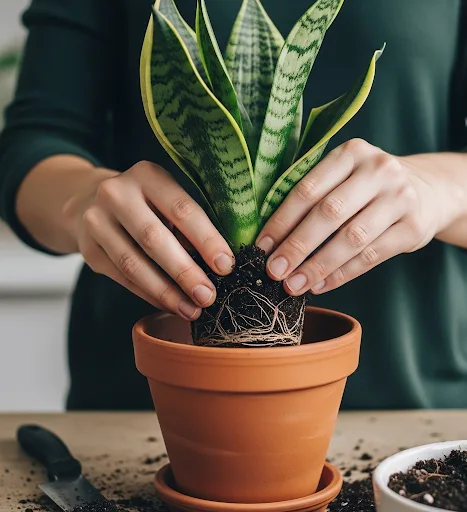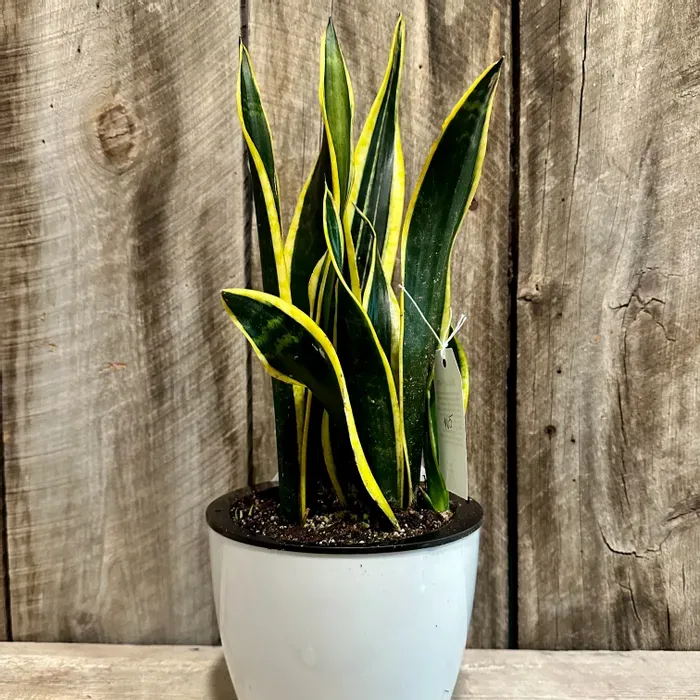Snake plants (Sansevieria), also called Mother-in-Law’s Tongue, are among the most popular indoor plants worldwide. Beloved for their striking upright leaves, resilience, and air-purifying qualities, they are perfect for beginners and experienced plant enthusiasts alike. Despite their hardy nature, proper care ensures healthy growth, vibrant foliage, and longevity. This guide provides a complete, beginner-friendly approach to taking care of a snake plant, covering lighting, watering, soil, propagation, and common issues.
Introduction

Snake plants are highly valued in indoor gardening because they require minimal attention yet thrive in diverse conditions. Their unique leaves and ability to filter indoor air toxins, such as formaldehyde and benzene, make them ideal for bedrooms, offices, and living spaces.
For beginners, understanding the specific care requirements of snake plants can prevent common mistakes like overwatering, poor lighting, or pest infestations. With proper care, snake plants can live for many years, sometimes producing new shoots and even flowers, enhancing both aesthetics and indoor air quality.
1. Choosing the Right Snake Plant
The first step in successful care is selecting a healthy plant suited to your environment.
Tips:
- Look for vibrant green, firm leaves free of yellowing or brown spots.
- Choose plants with compact root systems for easier transplanting and growth management.
- Consider popular varieties like Sansevieria trifasciata ‘Laurentii’, ‘Moonshine,’ or ‘Black Gold’**, each with unique leaf patterns and colors.
Benefits:
Starting with a healthy plant reduces stress, improves growth potential, and ensures long-term success.
2. Lighting Requirements

Snake plants are highly adaptable but thrive best in indirect light.
Guidelines:
- Place the plant near a bright window with filtered sunlight.
- Avoid direct, harsh sunlight that can scorch the leaves.
- Low-light areas are tolerated, though growth may slow down.
Tips:
Rotate the plant periodically to ensure even growth and prevent leaning toward light sources.
Benefits:
Providing optimal light helps the plant maintain strong, upright leaves, vibrant colors, and healthy growth.
3. Watering Your Snake Plant

One of the most crucial aspects of snake plant care is proper watering.
Guidelines:
- Water only when the top 1–2 inches of soil feel dry.
- Reduce watering during fall and winter when the plant is dormant.
- Avoid water accumulation at the bottom of the pot to prevent root rot.
Tips:
- Use well-draining soil to prevent waterlogging.
- Use a pot with drainage holes.
- A general rule is watering once every 2–4 weeks, depending on light and temperature.
Benefits:
Correct watering encourages strong roots, prevents leaf yellowing, and maintains a healthy appearance.
4. Soil and Potting Requirements
Snake plants prefer a well-draining soil mix to thrive.
Guidelines:
- Use a cactus or succulent soil mix for optimal drainage.
- For DIY soil, mix 2 parts potting soil, 1 part sand, and 1 part perlite.
- Choose a pot slightly larger than the root system to avoid overwatering issues.
Tips:
Repot every 2–3 years or when the plant becomes root-bound. Repotting encourages new growth and stronger roots.
Benefits:
Well-draining soil prevents root rot and provides a stable environment for healthy, vigorous growth.
5. Temperature and Humidity

Snake plants thrive in a range of temperatures and can adapt to indoor climates.
Guidelines:
- Ideal temperature range: 60–85°F (15–29°C).
- Avoid cold drafts or frost, which can damage the leaves.
- Moderate humidity is sufficient; high humidity is tolerated but not required.
Benefits:
Maintaining proper temperature and humidity ensures healthy leaf color, reduces stress, and promotes long-lasting plant health.
6. Fertilization
Although snake plants are low-maintenance, occasional fertilization can promote growth and vitality.
Guidelines:
- Use a balanced, water-soluble fertilizer diluted to half strength.
- Fertilize once a month during the growing season (spring and summer).
- Avoid fertilizing in fall and winter when growth slows.
Tips:
Over-fertilizing can burn roots and cause leaf damage. Always follow recommended doses.
Benefits:
Proper fertilization encourages stronger leaves, faster growth, and more robust plants.
7. Pruning and Maintenance

Pruning helps maintain a tidy appearance and removes damaged or unhealthy leaves.
Guidelines:
- Use sterilized scissors or pruning shears.
- Cut leaves at the base if they are yellow, brown, or damaged.
- Remove dust from leaves with a damp cloth to maximize photosynthesis.
Benefits:
Regular pruning improves aesthetic appeal, prevents disease spread, and supports overall plant health.
8. Propagation
Expanding your snake plant collection is easy through leaf cuttings or division.
Methods:
- Leaf cuttings: Cut healthy leaves, allow callousing, and plant in soil.
- Division: Separate sections of the root system to create new plants.
Tips:
Use propagation to replace damaged leaves, share with friends, or expand indoor greenery.
Benefits:
Propagation provides new plants at minimal cost and reinforces your gardening skills.
9. Common Problems and Solutions
Snake plants are resilient but can face a few issues if care is improper:
Problems:
- Yellowing leaves: Often due to overwatering or poor drainage.
- Leaf drooping or softening: Could indicate root rot or low light.
- Pests: Mealybugs, spider mites, and aphids occasionally infest plants.
Solutions:
- Reduce watering and ensure well-draining soil.
- Move the plant to brighter indirect light.
- Treat pests with insecticidal soap or neem oil.
Benefits:
Proactive care prevents plant stress and ensures long-term health and growth.
10. Benefits of Keeping Snake Plants
Caring for snake plants offers more than just aesthetic value.
- Air purification: Removes toxins like formaldehyde and benzene.
- Low-maintenance greenery: Thrives with minimal attention.
- Stress reduction: Enhances indoor spaces, improving mood and focus.
- Adaptable décor: Complements modern, minimalist, and traditional interiors.
These benefits make snake plants an ideal choice for beginners and seasoned gardeners alike.
Conclusion
Snake plants are the perfect indoor plant for beginners due to their hardiness, adaptability, and air-purifying qualities. By understanding their lighting, watering, soil, fertilization, and temperature requirements, anyone can enjoy healthy, thriving snake plants. Regular pruning, monitoring for pests, and proper propagation techniques ensure long-term plant health and expansion of your collection.
With patience and consistent care, snake plants can thrive for many years, offering beauty, improved indoor air quality, and a sense of accomplishment for beginners. This complete guide equips new plant owners with the knowledge and confidence needed to cultivate these remarkable plants successfully, turning any indoor space into a green sanctuary.





